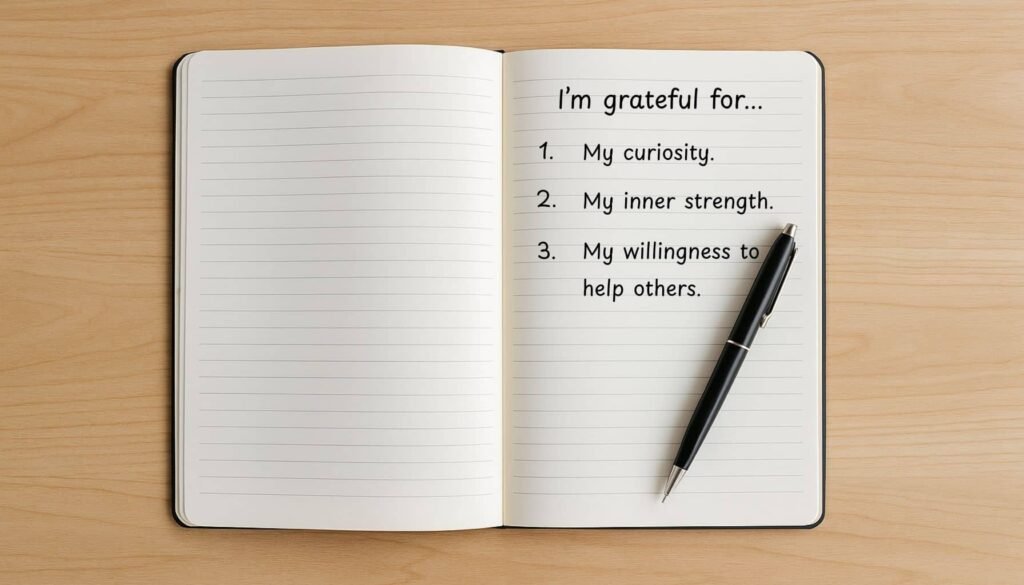Let me be honest with you: your brain is not trying to make you happy. It’s trying to keep you safe. Safe means predictable. Familiar. Even if familiar hurts.
It took me the better part of four decades to unlearn what was drilled into me during my first two decades of life.
Addictions. Shame. Self-doubt.
They were grooves in my brain that felt like truth. But they weren’t. They were just repeated enough, over and over again, inside my head for years.
But here’s the beauty of it—change starts the moment you decide to change.
You don’t need to “fix everything” all at once. You just need to do one thing different. One better action. One better choice. And then another. And build on it from there. And thinking better doesn’t work unless you follow it up with action. Let me say it plainly: you won’t think your way to a better life—you’ve got to live your way there. That said, a good place to start is with your thoughts, ad they influence and shape our reality.
Every Thought Lays a Brick on the Road You’re Walking

Every time you think a thought, your brain lays a little track. Once or twice? That’s a dusty path.
But a hundred times? That’s a highway with momentum.
This is how your brain makes new habits and thought patterns.
And here’s the kicker: you can repave those roads at any age. I’m in my 60s and I’m doing it right now. And so can you.
How? By noticing my thoughts, challenging the ones that don’t help, and choosing better ones—over and over again. It’s not always easy, but it works.
Not Every Thought Deserves to Stay

Here’s something most people don’t want to admit: some thoughts are lies. They’re old. Outdated. Don’t really serve anybody. And they might even belong to a past version of you that doesn’t fit anymore.
Thoughts like:
- “I always ruin things.”
- “No one really cares about me.”
- “I’ll never get ahead.”
One really negative experience can lead to these negative thoughts. But just because it happened once, or even several times, doesn’t make it true all of the time.
I used to believe those thoughts, too. But they’re just negative thought patterns. Habitual thoughts. And they can be changed.
How can I start changing these thoughts?
- See them.
- Identify them.
- Replace them.
Give the Voice a Name—Then Turn Down the Volume
One thing that’s really helped me shift out of unhelpful thought patterns: I name them.
Not in a dramatic way—just enough to create some distance.
“Doom Dan.” “Anxious Alex.” “Not-Good-Enough Nancy.”
It might sound silly, but naming the voice that originates my negative thought patterns helps to soften its grip. It stops being you and becomes something separate—something you can choose not to listen to.
Think of it like this: old, destructive thoughts are like bullies in your head. And bullies lose their power when you call them out.
I sometimes ask myself:
“Wait… who’s talking right now? Is this helping me—or hurting me?”
If it’s hurting, I thank it for its concern (briefly), and then I either let it go or switch channels. I reach for a different voice. One I do want in the driver’s seat.
“Kind Kate.” “Helpful Harry.” “Grounded Grace.”
Give your thoughts a face. Give them a name. Then decide who gets to stay.
A Better Thought Isn’t a Lie—It’s a Step Forward
This isn’t about pretending everything’s perfect. It’s also not fake-it-till-you-make-it.
It’s train-your-mind-like-you-train-a-muscle.
I don’t tell myself “I’m unstoppable” if I don’t feel it. That’s not helpful. I reach for the next best thought—the one I can believe.
| Old Thought | Better Thought |
| “I always fail.” | “I’m still learning.” |
| “Nothing ever works out.” | “What can I try today?” |
| “I’m a mess.” | “I’m figuring it out.” |
It’s not about perfection. It’s about movement.
One thought. One step. One shift at a time. Towards something better.
Practicing Joy
Let’s drop the illusion that joy is something you have when everything’s perfect. It’s not. It’s something you practice, daily. Like brushing your teeth or showing up to work.
Here’s what I do:
Morning Gratitude Journal
Before anything else, I write down three good things. Long ago, I used to have to dig deep to find them. But I always found them.

Now, decades later, having lived (and still living an amazing life), I can fill pages if I want to. I’ve learned to love more, say it far more, forgive fast and live joyfully.
Holding onto old emotional pain only makes it new pain in some new form.
If you let it go, it lets go of you!
Music That Moves Me
I’ve got a playlist that flips the switch in my brain within seconds. Sound can shake you out of a funk fast.
Gratitude Breathing
Three deep breaths. On each one, I think of something I’m thankful for. Doesn’t have to be big. Could just be, “I woke up.” Generally it’s my wife, my daughter and my son. And as you become more grateful for them, you naturally become less judgmental about them, and therefore easier to be around – just an added bonus, especially for them!
When you focus on the good, your brain starts looking for more good. Your brain becomes a magnet for what you train it to see.

When you focus on the good, your brain starts looking for more good. Your brain becomes a magnet for what you train it to see.
What Changed for Me
When I started changing my thought patterns, everything else began to shift too—quietly at first, then clearly:
- I wake up feeling calm, not anxious
- I sleep better
- I laugh more
- I talk to people without overthinking every word
- I feel lighter, freer, more me
I didn’t wait for happiness to show up. I started building it—on purpose.
Start With One Thought That Lifts You
If you’re only going to do one thing today, let it be this:
Pick a better thought—and say it out loud.
That one move:
- Opens the door to better choices
- Gets you unstuck
- Shifts your energy
- Rebuilds your life from the inside out
The 7-Day Thought Shift Challenge

Each morning, for one week:
- Write one positive thought about yourself.
- Say it out loud.
- Believe it—even if just a little.
Examples:
- “I’m doing my best.”
- “I’m allowed to feel peace.”
- “I matter.”
Remember to keep it positive – you want to start a new pattern going forward. Stating what you don’t want only focuses on the negative thing you’re trying to avoid.
It only takes one better thought to begin a new direction—start there, and let that small shift carry you forward.



